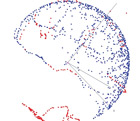
INORAme is the core technology that drives INORAsrs, an artifact/volumetric analysis software package that optimizes calibration schedules for coordinate measuring machines and other computer-numerically controlled equipment to reduce downtime. Source: Inora Technologies Inc.
The Inora software does things differently, according to Ingobert Schmadel, president of Inora Technologies (Ann Arbor, MI).
INORAme stands for Intelligent Optimization Self Regulated Adjustment Math Engine, and according to Schmadel, it automatically recognizes strengths and weaknesses within data and functional models to deal appropriately with unexpected deviations and constraints, outliers and blunders. Other products have limited tools to deal with the problem or no tool at all.
“As far as we know, no one tried like we did to solve the problem of data analysis completely,” says Schmadel. “That’s why we came up with this.”
INORAme got started 25 years ago after an attempt to solve a mathematical problem related to geodesy and network adjustment. Frustration with the inadequacies of existing methods in dealing with data containing certain restrictions led to a committed effort to develop a completely new tool from scratch.
The creators found common ground between many different sciences- physics, mechanics and statistical research-and found elements that connected everything. After some experimentation, they found a solution that represents the balance found in nature.
The result was a “core technology software tool that overcomes the limitations of traditional multivariate analysis methods to provide accurate, reliable and repeatable results,” according to Inora’s Web site.
It is a universally applicable math engine that overcomes two critical data evaluation problems: recognition and differentiation of uncertainty and unexpected deviations within data, and automatic recognition and appropriate handling of all types of constraints. It accomplishes all this with proprietary algorithms that automatically recognize and appropriately deal with all unexpected deviations and constraints.

INORAme automatically recognizes strengths and weaknesses within data and functional models to deal appropriately with unexpected deviations and constraints, outliers and blunders shown here in red. Source: Inora Technologies Inc.
The software provides increases in computational speed and freedom from data filtering and pre-process data manipulation leading to improved process control and reliability. The core technology also offers a 49% fault tolerance when relating information to a functional model.
Traditional multivariate analysis methods may provide questionable results because of their inability to correctly deal with leverages and latent or hidden constraints within data sets. INORAme applies appropriate balancing factors to negate these error-inducing influences and yield accurate results.
“There is a typical difference between our math engine and the way people deal with that today,” Schmadel says. “People tend to use filters to deal with unexpected deviation. Filters get a data set to recognize problems that might deal with it. If you choose the wrong filter, it will put bias on data, and then you will get biased results.
“We can deal with any issues right away because we have a general solution,” Schmadel says. “It is not built for specific problems.”
Customers can use the core technology or have a solution developed that is specifically tailored to their needs. “Customers can use our core technology or modules that are based on our core technology,” Schmadel says. “There is a tremendous improvement in reliability, reproducibility and repeatability.”
Technology Contact
For more information on INORA, contact:- Inora Technologies Inc.
3928 Varsity Dr.
Ann Arbor, MI 48108
(734) 302-7488
[email protected]
www.inora.com
Specifications
- 49% fault tolerance when relating information to a functional model
- Increased computational speed and accuracy
- Freedom from assumption-based data filtering and pre-process data manipulation
- Accurate functional model development for new or unstable processes
- High levels of automation
